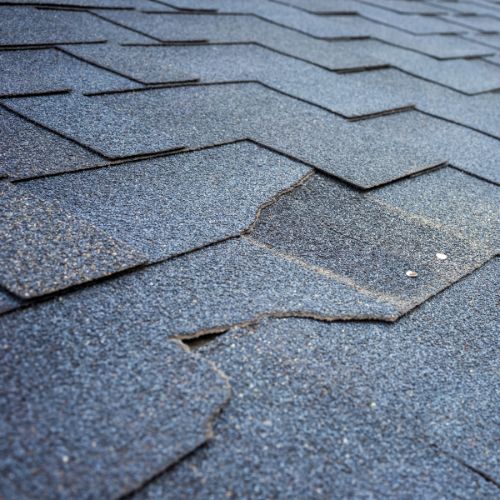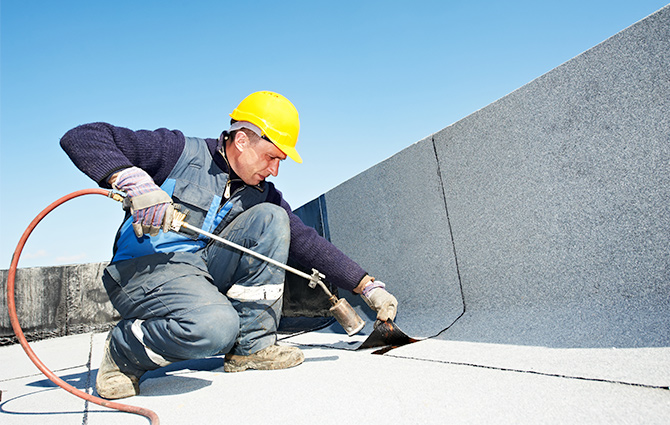How to Identify Usual Roof Problems and Their Solutions
When it comes to preserving your roofing system, recognizing usual problems early can save you time and cash. You may notice signs like water discolorations, missing shingles, or even moss growth.
Signs of Roof Leaks and Exactly How to Repair Them
A leaking roofing system can transform your home right into a headache if not resolved without delay. If you see peeling paint or mold and mildew growth, it's an indicator that moisture is trapped.
To fix these problems, start by locating the source of the leak. Check your attic for indicators of moisture or water entrance. When you identify the issue area, you can seal small spaces with roof concrete or caulk. For even more considerable damages, you may need to replace roof shingles or also repair flashing. If you're uncertain, always guarantee safety and security first-- use a strong ladder and consider working with a specialist. Dealing with leaks quickly can aid you stay clear of costly repair work down the line and maintain your home completely dry and risk-free.
Determining Missing or Harmed Shingles
When checking your roofing system, look for any kind of missing out on or damaged shingles that might result in bigger problems. A visual evaluation can expose signs of water damages, which may show that it's time to repair or change those shingles. Attending to these issues early can conserve you money and time in the long run.
Visual Inspection Methods
To effectively determine missing or harmed shingles, begin by performing a comprehensive aesthetic inspection of your roof. Grab a pair of binoculars for a closer look, or utilize a ladder if you're comfortable. Look for any type of roof shingles that are curled, fractured, or totally missing out on. Pay unique interest to areas around valleys, smokeshafts, and vents, as these places are vulnerable to damage. Try to find granules in your rain gutters or on the ground, which indicates wear. If you see any type of staining or unequal surface areas, that can signal a trouble. Do not neglect to check the edges of your roofing system; broken or loose roof shingles below can cause larger issues. Normal inspections can aid maintain your roof covering's stability.
Signs of Water Damages
While checking your roof covering for missing or damaged shingles, look for signs of water damages that can suggest underlying issues. Examine for dark touches or spots on the roof shingles, as these often signal wetness infiltration. If you notice any crinkled or twisted roof shingles, they might additionally be jeopardized, permitting water to permeate via. In addition, evaluate the edges of your roof and around chimneys for any indicators of rot or mold and mildew, which can hint at prolonged wetness direct exposure. Do not forget to examine your attic room for water areas or damp insulation, as these can reveal leaks. Addressing these signs early can protect against much more considerable damage and expensive repair work down the line, guaranteeing your home continues to be safeguarded.
Repair or Replace Alternatives

If you discover missing out on or damaged roof shingles throughout your roof covering inspection, you'll require to decide whether to repair or replace them. If just a few tiles are impacted and the remainder of your roof is in good condition, a repair might be all you need.
Nevertheless, if your roof shingles are curling, cracking, or the damages is prevalent, replacement may be the better choice. A new roof can improve your home's visual charm and energy effectiveness. When making this choice, always consider the age of your roof and your budget. Consulting a roofing expert can provide important understandings customized to your scenario.
Acknowledging Drooping Roofs and Their Causes
Acknowledging a drooping roof is important because it frequently indicates underlying structural concerns that call for prompt focus. Start by examining the roof covering for visible indicators of sagging, like a bowing center or sagging eaves.

You need to likewise inspect for indications of wood rot, which can damage the framework better. Don't wait; addressing the problem promptly can safeguard your investment and your tranquility of mind.
The Dangers of Moss and Algae Development
Moss and algae growth on your roofing isn't just an eye sore; it can pose serious health and wellness threats and bring about architectural damage over time. These microorganisms can compromise your roofing's integrity and create a reproduction ground for dangerous spores if left without treatment. Let's explore just how to avoid and treat this issue effectively
Health Hazards of Development
While you might value the natural appeal of moss and algae on your roof, it's important to understand the potential carcinogen they position. These developments can catch dampness, leading to a damp atmosphere that advertises mold and mildew and mildew. Exposure to mold and mildew spores can activate respiratory system concerns, allergies, and other health and wellness problems for you and your household. Additionally, if you have pet dogs, they can also be influenced by the toxins released by particular kinds of algae. It is necessary to maintain your roofing clear of these growths to maintain a healthy living environment. Regular upkeep and cleansing can help stop their buildup, ensuring your home remains safe and your air use this link high quality stays high. Don't ignore the importance of a tidy roofing system!
Architectural Damages Threats
If you allow moss and algae flourish on your roofing system, you might be establishing the stage for major structural damage. Over time, this dampness can compromise your roof's architectural stability, making it extra prone to leaks and various other problems. Ignoring these indicators not just risks your roofing system however also the entire structure of your home.
Prevention and Treatment Methods
Overlooking moss and algae can cause substantial problems, however taking safety nets and treating any type of existing growth can shield your roof. Beginning by on a regular basis cleansing your roof covering to eliminate particles and wetness, as this creates an environment for growth. Make use of a blend of water and bleach to gently scrub the impacted areas if you discover moss or algae. For prevention, think about installing zinc or copper strips along the ridge of your roof covering; these steels hinder growth as rainfall washes over them. Furthermore, ensure your roof has correct ventilation to reduce dampness buildup. By staying positive and dealing with these issues promptly, you can extend your roofing's life-span and keep its integrity, conserving you costly repair work down the line.
Recognizing Roof Covering Air Flow Issues
Proper roofing system ventilation is crucial for maintaining the see this page stability of your home, as it assists regulate temperature and wetness levels in the attic. Without appropriate air flow, you might encounter major issues like mold and mildew growth, wood rot, and increased power prices. Examine your roofing for indicators of bad air flow, such as too much warmth in the attic room throughout hot months or condensation forming on rafters.
You should likewise seek unequal snow melting in winter, suggesting entraped warmth. If you notice any one of these indications, it's time to evaluate your air flow system. See to it you have a balanced intake and exhaust system, permitting fresh air in and stale air out.
You may need to include ridge vents, soffit vents, or gable vents to enhance airflow. Routine maintenance and monitoring can stop pricey repairs down the line, so do not overlook this vital facet of your roof system.

How to Area Roof Covering Flashing Problems
Keeping great air flow is simply one part of a well-functioning roof system; roofing system blinking plays an essential duty in keeping your home secure from water damage. To detect flashing problems, start by examining the areas where different roof covering areas meet, like valleys, chimneys, and vents. Try to find any kind of noticeable voids, rust, or peeling paint, which can show deterioration. Inspect for cracks in the caulk or sealant that might enable water to permeate through.
Additionally, examine the blinking for any indicators of flexing or imbalance; these issues can endanger its effectiveness. If you observe any of these indications, it's important to resolve them promptly to avoid expensive damage.
The Relevance of Routine Roof Covering Inspections
While it's very easy to forget, regular roofing browse around these guys assessments are crucial for preserving the stability of your home. By scheduling these evaluations, you can capture prospective issues before they intensify right into pricey repair work. Inspectors will certainly recognize problems like missing tiles, leakages, or put on around blinking that you may not see from the ground.
You'll also profit from satisfaction, recognizing your roof covering is in great shape. After all, your roofing system safeguards everything below it, from your household to your personal belongings. Routine inspections can extend your roofing's life expectancy and enhance its efficiency, conserving you money in the future.
Make it a behavior to inspect your roof covering at the very least twice a year and after considerable weather occasions. Staying positive regarding roof upkeep guarantees you resolve minor issues prior to they develop into significant headaches. Do not wait till it's also late-- timetable your roofing examination today!
Regularly Asked Questions
Exactly how Usually Should I Arrange Professional Roof Examinations?
You need to set up expert roof covering evaluations at the very least annually. Nonetheless, after severe climate occasions, it's a good idea to have an evaluation faster. Routine checks help capture possible problems prior to they escalate into expensive fixings.
Can I Repair My Roof covering Myself, or Should I Work with a Service Provider?
You can try roofing system repair work on your own if you're confident and have the right devices, yet hiring a professional guarantees specialist top quality and safety. Consider your abilities and the project's intricacy prior to determining.
What Are the Indicators I Need a New Roofing System?
You'll understand you require a new roof covering when you find considerable leakages, missing out on tiles, extensive granule loss, or drooping areas. If your roofing system's age exceeds two decades, it's time to contemplate replacement options.
Exactly How Much Does Roofing Fixing Commonly Expense?
Roofing repair service prices usually range from $300 to $1,500, depending upon the damage and materials required. You'll intend to get several quotes to assure you're making the very best choice for your budget plan.
What Products Are Finest for Roof in My Climate?
You should take into consideration materials like asphalt shingles for moderate environments, metal for sturdiness, and clay tiles in warm regions. roofing chesterfield mo. Each option has distinct benefits, so consider your environment's particular needs and your home's style
When inspecting your roof covering, look for any kind of missing out on or damaged shingles that could lead to bigger troubles.To effectively identify missing or harmed shingles, begin by conducting an extensive visual examination of your roof.While checking your roof covering for missing out on or harmed roof shingles, look for indications of water damages that can suggest underlying problems.If you discover missing out on or harmed roof shingles during your roofing system evaluation, you'll need to make a decision whether to repair or replace them.Maintaining good air flow is simply one component of a well-functioning roof system; roof blinking plays an important role in maintaining your home risk-free from water damage.
Comments on “First-Class Roofing Work by a Go-To roofer in chesterfield”